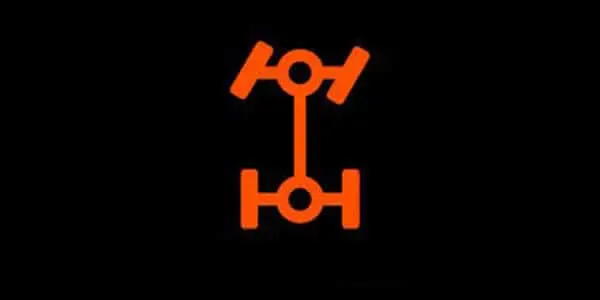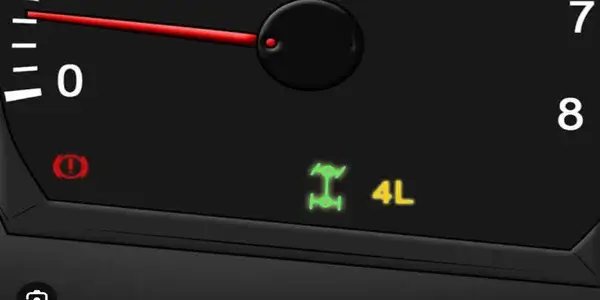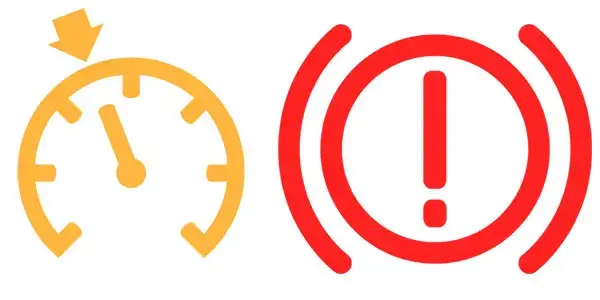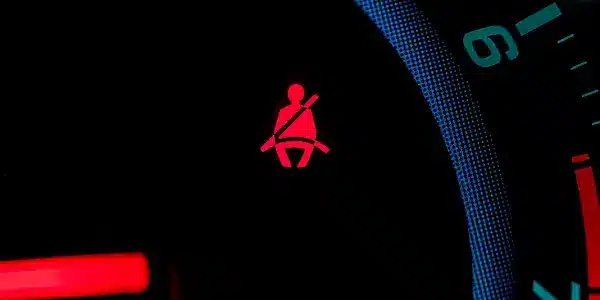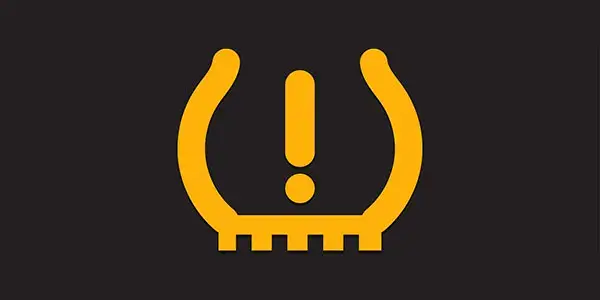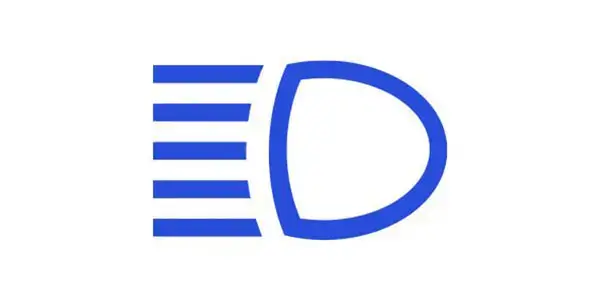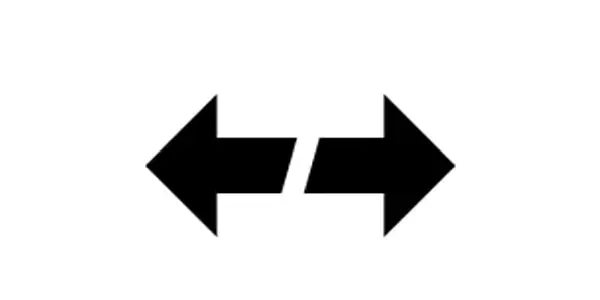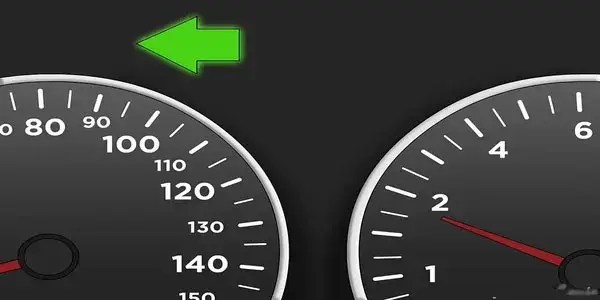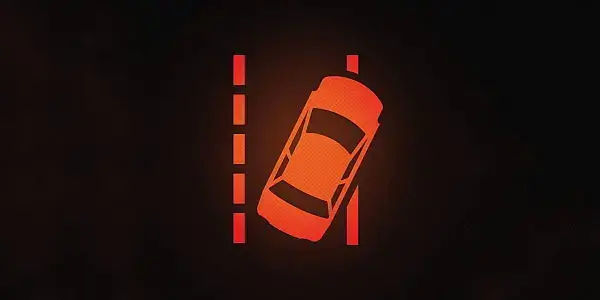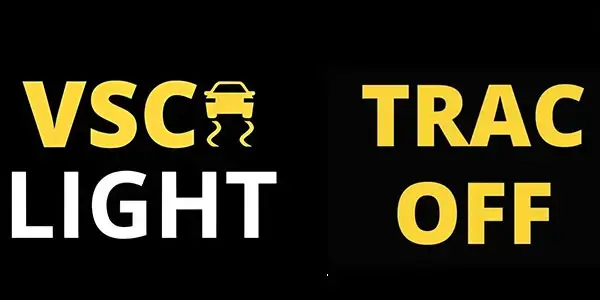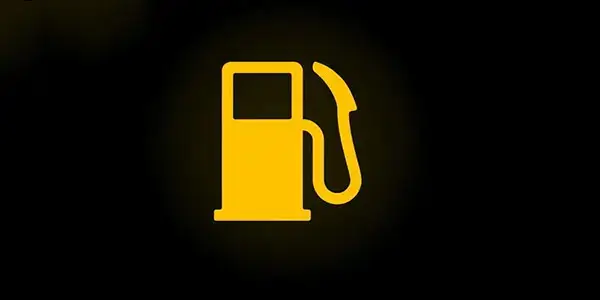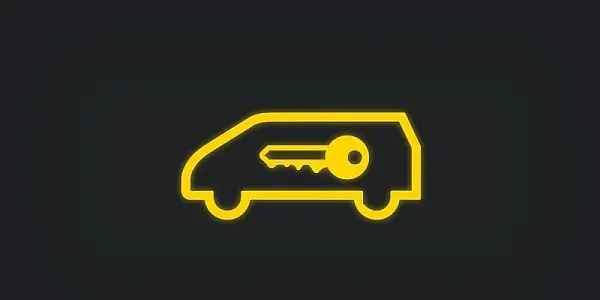Did you know that your Toyota’s dashboard is filled with a multitude of symbols, each carrying its own unique meaning? It may come as a surprise, but understanding these symbols is crucial for maintaining a safe and efficient driving experience. By decoding these dashboard symbols correctly, you can prevent potential issues and ensure that your Toyota performs optimally.
Whether you drive a Camry, Corolla, or any other Toyota model, familiarizing yourself with the dashboard symbols is essential. These symbols act as visual indicators, providing important information about your vehicle’s status, such as engine problems, tire pressure warnings, or even low fuel levels. Ignoring or misinterpreting these symbols can lead to costly repairs or even compromise your safety on the road.
In most situations, it is unlikely to be critical, but if it is, it is critical that you bring your car to the Toyota Service Department as soon as possible. Your dashboard lighting up like a Decorations is a driver’s worst nightmare, and with that in mind, we’re going to look at the subject of what are Toyota Dashboard Symbols and Meanings to help you understand.
Importance of Identifying Toyota Dashboard Symbols and their Meanings
Recognizing warning lights can help avoid costly repairs.
Those little symbols and lights may seem insignificant or confusing at first glance. However, understanding the importance of identifying and interpreting these warning lights can save you from costly repairs down the road. These warning lights are designed to alert you to potential issues with your vehicle, giving you an opportunity to address them before they become major problems.
Imagine driving along the highway when suddenly a small symbol illuminates on your dashboard. It could be something as simple as a low tire pressure warning or as serious as an engine malfunction. By recognizing this warning light and taking immediate action, you have the chance to prevent further damage that could result in expensive repairs. For example, if you ignore a check engine light indicating a faulty oxygen sensor, it could lead to decreased fuel efficiency and eventually damage other components of your vehicle’s engine system.
Understanding warning lights ensures prompt action when needed.
In this fast-paced world, we often find ourselves rushing from one place to another without paying much attention to our surroundings. However,Ignoring warning lights can have dire consequences. Understanding what each symbol means allows us to take prompt action when needed and ensure our safety on the road.
High-Speed WD Indicator Light
The High-Speed WD (Four-Wheel Drive) Indicator Light is an important feature in Toyota vehicles that indicates when high-speed four-wheel drive is engaged. This light illuminates when the vehicle is in 4H mode, which stands for “four-wheel drive high.” Engaging this mode provides increased traction at higher speeds, making it particularly useful for off-road driving or challenging road conditions.
When you see the High Speed WD Indicator Light on your Toyota’s dashboard, it means that the vehicle’s four-wheel drive system is actively working to enhance stability and control. This can be especially beneficial when driving on slippery surfaces like snow, mud, or gravel. The increased traction provided by the four-wheel drive system helps prevent wheel slippage and ensures better handling even at higher speeds.
Off-road enthusiasts often rely on the High Speed WD Indicator Light to gauge whether their Toyota is ready to tackle demanding terrains. When engaging 4H mode, drivers can confidently navigate through rough trails and conquer obstacles with ease. Whether you’re exploring rugged mountain paths or venturing into remote areas, having this indicator light as a visual confirmation of your active four-wheel drive system brings peace of mind.
Low Speed WD Indicator Light
The low-speed WD indicator light in your Toyota dashboard is an important feature that signals the activation of the low-speed four-wheel drive mode, also known as 4L. This mode provides enhanced torque and control for off-roading or navigating steep inclines and declines. By engaging this mode, you can improve traction at low speeds, making it easier to crawl over obstacles and maneuver through challenging terrain.
When you activate the low-speed four-wheel drive mode, your vehicle’s power is distributed evenly between all four wheels, allowing for better grip on slippery surfaces. This can be particularly useful when driving on muddy trails or snowy roads where regular two-wheel drive might struggle to maintain traction. The increased torque provided by the 4L mode ensures that your vehicle has enough power to conquer challenging off-road situations.
Switching back to regular two-wheel drive after using the low-speed four-wheel drive mode not only disengages the enhanced torque but also increases fuel efficiency. Since the 4L mode consumes more energy due to its increased power output, reverting to two-wheel drive when you no longer require additional traction will help conserve fuel during normal driving conditions.
To engage the low-speed four-wheel drive mode in your Toyota, follow these steps:
-
Bring your vehicle to a complete stop.
-
Shift into neutral.
Cruise Control and Crawl Control Indicator Lights
The Toyota dashboard is equipped with various symbols and lights that provide important information to drivers. Among these, two notable indicator lights are the Cruise Control light and the Crawl Control light.
Cruise Control Light: Maintaining Set Speed Automatically
The Cruise Control light on your Toyota dashboard illuminates when the cruise control system is active. This feature allows you to set a desired speed for your vehicle, which it will then maintain automatically. It can be particularly useful during long highway drives or when you want to maintain a constant speed without having to keep your foot on the accelerator pedal.
When you activate the cruise control system, the light will turn on, indicating that it is in operation. The system will then take over the task of maintaining your chosen speed, allowing you to relax and enjoy a more comfortable driving experience. However, it’s important to note that cruise control should only be used in appropriate conditions and situations where it is safe to do so.
To regain full manual control of your vehicle while using cruise control, simply press the brake pedal or disengage the system manually using the controls located on either your steering wheel or dashboard panel. This instantly returns control back to you as the driver.
Seat Belt, Maintenance, and Vehicle Inspection Reminder Lights
Seat Belt Reminder Light: Buckle Up for Safety
The seat belt reminder light in your Toyota dashboard is a crucial safety feature that serves as a constant reminder to fasten your seat belt. It plays an essential role in ensuring the safety of both the driver and passengers. When you start your car, this light illuminates to remind everyone inside the vehicle to buckle up.
Wearing a seat belt is not just about abiding by the law; it significantly reduces the risk of severe injury or even death in case of an accident. The seat belt acts as a restraint system that keeps occupants securely in their seats during sudden stops or collisions. It prevents individuals from being thrown forward or ejected from the vehicle.
Toyota’s commitment to safety extends beyond the driver’s seat. Some models are equipped with a front passenger occupant classification system, which detects if someone is sitting in the front passenger seat and determines their size and weight. If this system detects an adult-sized person or significant weight on the front passenger seat without their seat belt fastened, it will trigger both an audible warning and illuminate the corresponding indicator on the dashboard.
Remember, wearing your seat belt is not only vital for your own safety but also for those around you.
Low Engine Oil Pressure Warning Light
The low engine oil pressure warning light is a crucial indicator that should never be ignored. When this light illuminates on your Toyota dashboard, it means that the oil pressure in your engine has dropped below the recommended levels. Ignoring this warning can lead to potential engine damage if not addressed promptly.
Insufficient lubrication within the engine is the main cause of low oil pressure. Oil serves as a vital lubricant for various moving parts in the engine, reducing friction and preventing excessive wear. When the oil pressure drops, it indicates that these critical components are not receiving adequate lubrication, which can result in increased friction and accelerated wear.
Taking immediate action is essential when you see this warning light.
- Start by checking your oil levels to ensure they are at the recommended level.
- If the oil level appears low, you should add more oil as soon as possible.
However, if the oil level is sufficient or you continue to see the warning light even after adding more oil, it is crucial to consult a professional mechanic or take your vehicle to a trusted service center for further inspection.
A qualified mechanic will be able to diagnose any underlying issues causing the low engine oil pressure warning light to illuminate persistently.
Tire Pressure Warning
Importance of Maintaining Proper Tire Inflation Pressure
The tire pressure warning light is a vital feature in modern vehicles, including Toyota models. When this warning light illuminates on your dashboard, it signifies that the tire pressure has fallen below the recommended level. Understanding the significance of maintaining proper tire inflation pressure is crucial for ensuring optimal driving conditions and preventing potential problems.
Effects of Incorrect Tire Pressure
Incorrect tire pressure can have adverse effects on various aspects of your vehicle’s performance. One notable impact is on handling. Insufficient air in the tires can lead to reduced grip and stability, making it more challenging to control your vehicle while driving. On the other hand, overinflated tires can result in a harsh ride and compromised traction.
Fuel efficiency
Fuel efficiency is another area affected by incorrect tire pressure. Underinflated tires create additional rolling resistance, causing your engine to work harder and consume more fuel to maintain speed. By keeping your tires properly inflated, you can maximize fuel economy and save money at the pump.
Lifespan
Moreover, maintaining the correct tire pressure is essential for extending the lifespan of your tires. When tires are not inflated to their recommended level, certain areas may experience excessive wear due to uneven distribution of weight on the tread surface. This uneven wear can significantly reduce tire longevity and necessitate premature replacements.
Headlight High Beam Indicator
The Headlight High Beam Indicator is an important feature on the Toyota dashboard that alerts drivers when their high beams are engaged. This indicator light flashes to let you know that your high beams are active, providing improved visibility at night or in low-light conditions.
When driving in dark areas, such as rural roads with minimal street lighting, it can be beneficial to use your vehicle’s high beams. The increased brightness helps illuminate the road ahead, making it easier to spot any potential hazards or obstacles in your path. However, it’s crucial to remember that switching from high beams to low beams is essential when approaching other vehicles.
Engaging your high beams without considering other drivers can lead to a dangerous situation where you may blind those driving ahead of you. This can cause temporary vision impairment and increase the risk of accidents. Therefore, it’s important to be mindful of other motorists on the road and switch back to low beams when necessary.
The Headlight High Beam Indicator serves as a reminder for drivers to adjust their headlights accordingly. By paying attention to this indicator light and being aware of its meaning, you can ensure safer driving experiences for both yourself and others on the road.
In addition to the Headlight High Beam Indicator, many modern Toyota vehicles come equipped with advanced safety features like blind spot monitors.
Turn Signal Indicator
The turn signal indicator on your Toyota dashboard is a vital component that helps you communicate with other drivers on the road. When activated, this indicator displays a flashing arrow symbol, informing nearby drivers of your intended direction. Let’s explore the significance of the turn signal indicator and how it promotes safe lane changes and turns.
Flashing Arrow Symbol for Direction
The primary purpose of the turn signal indicator is to visually alert other drivers of your intention to change lanes or make a turn. This is achieved through a flashing arrow symbol displayed on your dashboard. The symbol typically appears as an illuminated arrow pointing either left or right, depending on which direction you intend to go.
By activating the turn signal switch located near your steering wheel, you engage the system responsible for triggering this visual indication. As soon as you initiate a lane change or prepare for a turn, the flashing arrow symbol begins its rhythmic blinking pattern.
Promoting Safe Lane Changes and Turns
The presence of functioning turn signals plays a crucial role in ensuring road safety. By using them appropriately, you can effectively communicate your intentions to other drivers around you, allowing them to anticipate your next move and adjust accordingly.
When you activate your turn signal indicator before changing lanes, it alerts drivers in adjacent lanes that you plan to move into their space.
Lane Departure Alert System
The Lane Departure Alert System is a crucial feature in Toyota vehicles that helps enhance safety on the road. This advanced system is designed to prevent accidents caused by drowsiness, distraction, or unintentional lane drifting without signaling. By providing visual or audible warnings, it prompts the driver to steer back into the correct lane and avoid potential collisions.
How Does It Work?
The Lane Departure Alert System utilizes various sensors and cameras strategically placed around the vehicle to monitor lane markings and detect any deviation from the intended path. These sensors work in conjunction with other safety systems such as the airbag system and braking system to ensure optimal protection for both the driver and passengers.
When driving, especially on long journeys or monotonous road surfaces, it’s easy for drivers to become fatigued or lose focus. In such situations, the Lane Departure Alert System acts as an extra pair of eyes on the road, constantly monitoring lane position and movement. If the system detects that the vehicle is drifting out of its lane without signaling, it will immediately provide a warning signal to alert the driver.
Importance in Accident Prevention
Accidents can happen in a split second due to momentary lapses in attention or fatigue.
VSC Off and TRAC Off Indicators
What do the VSC Off and TRAC Off indicators mean?
The VSC Off and TRAC Off indicators are dashboard symbols that you may come across in your Toyota vehicle. These lights serve as a notification to let you know the status of two important safety systems: Vehicle Stability Control (VSC) and Traction Control (TRAC). Understanding what these symbols indicate can help ensure your safety while driving.
Vehicle Stability Control (VSC) off light
The VSC off light illuminates when the VSC system has been manually deactivated. The purpose of the VSC system is to assist in maintaining vehicle stability during various driving conditions. It uses sensors to detect any loss of traction or skidding, then applies braking force to individual wheels or reduces engine power to help regain control.
However, there may be situations where disabling the VSC system becomes necessary. For example, when driving on slippery surfaces such as snow or ice, controlled wheel slip may be advantageous for maintaining momentum and avoiding getting stuck. By turning off the VSC system, you allow the wheels to spin freely without interference from the stability control system.
It’s essential to note that while turning off VSC can provide certain benefits in specific circumstances, it also increases the risk of losing control over your vehicle.
Why Would You Turn Off Traction Control?
There are instances when turning off the traction control system becomes beneficial. Here are a few scenarios where it might be necessary:
-
Driving on Deep Snow: When driving on deep snow, wheel spin can help maintain momentum and prevent the vehicle from getting stuck. By turning off the traction control, you allow the wheels to spin more freely, providing better traction in these conditions.
-
Loose Surfaces: Similar to driving on deep snow, loose surfaces like gravel or sand may require wheel spin for improved grip. Disabling the traction control system allows you to take advantage of wheel spin and maintain better control of your vehicle.
-
Off-Roading: When venturing off-road, especially on rugged terrain with uneven surfaces, turning off the traction control can enhance your ability to navigate obstacles effectively. It gives you more freedom to maneuver and utilize wheel spin strategically.
-
Stuck in Mud: When you find yourself stuck in mud, turning off the traction control can be a helpful strategy to get your vehicle unstuck. Traction control systems are designed to limit wheel spin in order to maintain stability and control on slippery surfaces. However, in certain situations, such as being stuck in mud, wheel spin can actually be beneficial in gaining traction and freeing your vehicle.
Low Fuel Level Warning Light
The low fuel level warning light is an essential feature on Toyota dashboards that illuminates when the fuel level drops below a predetermined threshold. It serves as a reminder to refuel promptly to avoid running out of fuel during journeys.
Importance of Monitoring Fuel Levels
Keeping an eye on your fuel levels is crucial for several reasons. First and foremost, it ensures that you don’t find yourself stranded on the side of the road with an empty tank. Running out of fuel can be inconvenient, time-consuming, and potentially dangerous, especially if you’re in an unfamiliar or remote location.
Consistently driving with low fuel levels can have negative consequences for your vehicle’s performance. When the fuel level gets too low, it may cause the fuel pump to suck in air instead of gasoline. This can lead to overheating and damage to the pump itself, resulting in costly repairs.
Prompt Refueling: Avoiding Unforeseen Issues
When the low fuel level warning light comes on, it’s important not to ignore it. Instead, make it a priority to refuel as soon as possible. By doing so, you’ll prevent any potential problems associated with running out of gas while driving.
Moreover, regularly refueling your vehicle helps maintain proper lubrication and cooling for various components within the engine system.
Smart Key Indicator
The Smart Key Indicator is an important safety feature found in Toyota vehicles. This feature lights up when the smart key system detects the presence of the key fob within range for keyless entry and ignition functionality. It serves as a visual cue to let you know that your vehicle can be started without physically inserting a key into an ignition slot.
Having a smart key is a convenient and modern way of operating your vehicle, providing ease of use and added security. Instead of fumbling with keys, you simply need to have the smart key in your pocket or bag while approaching your Toyota. The Smart Key Indicator illuminates to confirm that the key fob is within range, allowing you to effortlessly unlock the doors and start the engine.
This safety feature eliminates the need for physical contact with the key, reducing the chances of losing or misplacing it. With traditional keys, there’s always a risk of accidentally leaving them behind or forgetting where you placed them. However, with the smart key system and its indicator, you can ensure that your vehicle remains secure as long as you keep the key fob within range.
The Smart Key Indicator also plays a role in preventing theft. Without physical access to the vehicle’s interior, it becomes much more difficult for potential thieves to steal your car.
Headlight High Beam Indicator (Continued)
Why is the high beam indicator important?
The high beam indicator on your Toyota dashboard symbolizes that your high beam headlights are active, providing improved visibility at night or in low-light conditions. It’s a crucial feature that ensures you can see clearly on dark roads, making driving safer for you and those around you.
Switching to low beams when approaching other vehicles
While the high beam headlights are excellent for illuminating the road ahead, it’s essential to switch back to low beams when approaching other vehicles. This step is crucial as it prevents blinding drivers ahead and ensures everyone’s safety on the road.
When you notice an oncoming vehicle or a car traveling in front of you, quickly switch from high beams to low beams. This action helps maintain proper visibility without causing discomfort or temporary blindness for other drivers. By doing so, you contribute to creating a more harmonious driving environment where everyone can navigate safely.
The importance of being aware of dashboard symbols
Understanding the meaning behind dashboard symbols is vital for every driver. These symbols serve as visual cues that convey essential information about your vehicle’s status and potential issues. Ignoring or misinterpreting these symbols can lead to unnecessary complications or even accidents.
To Know More About Toyota Corolla Dashboard Symbols
Toyota Camry Warning lights
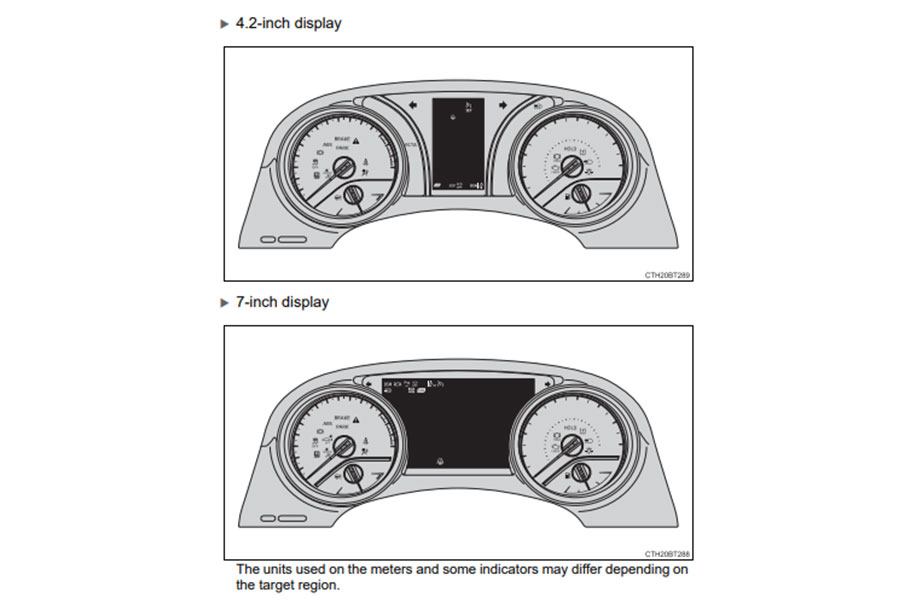
The driver is alerted of problems in the systems of the car through warning lights.

Toyota Camry Indicator Lights
If you find yourself uncertain about the functionality of the dashboard symbols in your Toyota Camry and are unsure of how to respond when they appear, don’t worry. This guide provides a comprehensive resource on “Toyota Camry Dashboard Symbols and Meanings,” offering detailed explanations for the most essential symbols and clear instructions on how to react when these symbols illuminate.

Toyota C-HR Warning lights
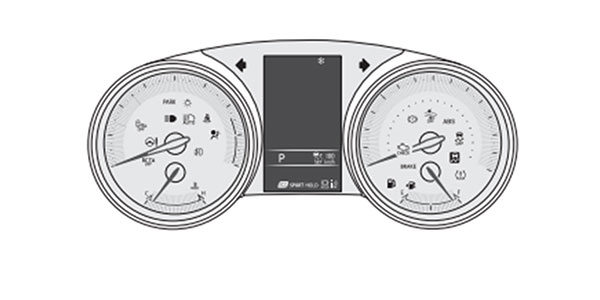
The driver is alerted of problems in the systems of the car through warning lights.

Toyota C-HR Indicator Lights
The indicators inform the driver of the operating state of the vehicle’s various systems.


Toyota Highlander, 4Runner, Tacoma Warning lights

The driver is alerted of problems in the systems of the car through warning lights.
Toyota Highlander, 4Runner, Tacoma Indicator lights

The indicators inform the driver of the operating state of the vehicle’s various systems.
Toyota Rav4 Warning lights
Here is an just overview of instrumental cluster and dashboard symbols signs, however to know more in detail with in depth knowledge of what are these symbols actually mean and how to react against the ones that could cause a concern when they illuminated, you can refer to the comprehensive “Toyota RAV4 Dashboard Symbols and Meanings: Ultimate Guide.” This guide provides a thorough explanation of each symbol and offers valuable insights on how to respond when these indicators light up.


The driver is alerted of problems in the systems of the car through warning lights.
Toyota Rav4 Indicator lights

The indicators inform the driver of the operating state of the vehicle’s various systems.
Understanding Dashboard Symbols
Dashboard symbols are designed to convey information quickly and effectively, allowing drivers to stay informed about their vehicle’s status at a glance. These symbols represent different systems and components in your Toyota, alerting you to potential issues or providing important reminders. By understanding the meanings behind these symbols, you can address any concerns promptly and ensure the optimal performance of your vehicle.
Here are some common dashboard symbols found in vehicles without multiinformation display screens:
-
Check Engine Light: This symbol typically resembles an engine outline or may simply say “CHECK.” It indicates that there is a problem with the engine or its related systems. When this light illuminates, it is essential to have your vehicle inspected by a qualified technician to diagnose and resolve any underlying issues.
-
Battery Warning Light: Shaped like a battery or displaying the word “BATT,” this symbol alerts you to potential problems with your vehicle’s charging system.
Conclusion: Understanding Toyota Dashboard Symbols and Meanings
Congratulations! You’ve now gained a deeper understanding of the various dashboard symbols and their meanings in your Toyota vehicle. By familiarizing yourself with these warning lights, you can ensure your safety on the road and prevent potential issues from escalating.
Now that you’re equipped with this knowledge, take charge of maintaining your Toyota’s health by promptly addressing any warning lights that appear on your dashboard. Remember, prevention is key to avoiding costly repairs down the line. So, if a tire pressure warning light comes on, check your tire pressure immediately to prevent further damage. And if the low engine oil pressure warning light illuminates, be sure to check and refill your oil as soon as possible.
By being proactive and attentive to your vehicle’s dashboard symbols, you can enjoy a smoother driving experience and prolong the lifespan of your beloved Toyota. Stay safe out there!
FAQs
Why is it important to understand Toyota dashboard symbols?
Understanding Toyota dashboard symbols is crucial for several reasons. Firstly, these symbols serve as warnings for potential issues with your vehicle’s systems or components. By recognizing and addressing them promptly, you can prevent more significant problems from occurring. Secondly, having knowledge about these symbols empowers you to make informed decisions about maintenance or repairs needed for your Toyota. Lastly, understanding these symbols enhances overall safety by allowing you to respond appropriately in critical situations.
Can I continue driving when a warning light appears on my Toyota dashboard?
It depends on the specific symbol that illuminates on your Toyota dashboard. Some warning lights indicate minor issues that may not require immediate attention but should be addressed as soon as possible. However, other symbols signify more severe problems that may pose risks to both you and your vehicle’s performance or safety. It is generally recommended to consult your owner’s manual or contact a qualified technician when a warning light appears for clarification on whether it is safe to continue driving or if immediate action is required.
More:

